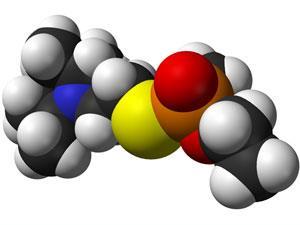UK scientists have shown that plants can be used to detect nerve agents.
Nerve agents such as the acetylcholinesterase inhibitor, VX (O-ethyl S-[2-(diisopropylamino)ethyl] methylphosphonothioate), are extremely toxic substances banned by the Chemical Weapons Convention. Unfortunately, they can still be used to terrifying effect in the wrong hands, with one example being the sarin attacks in the Tokyo Metro in 1995.

It is therefore very important to be able to determine when they have been used. However, this can prove difficult as the chemicals can be absorbed by soil, making them hard to recover, or they can leach into groundwater.
Matthew Baker and Matthew Gravett and their team at the Defence Science and Technology Laboratory, Porton Down, and University of Central Lancashire, Preston, have found a way to counter this. They showed that plants such as mustard can take up VX and its degradation products from contaminated soil, negating the concern that evidence may be washed away. They were then able to extract the nerve agents using an ethanol extraction, which was analysed using gas chromatography and liquid chromatography-mass spectrometry.
‘If someone had used VX, we’ve shown the possibility that you can collect local flora, extract it and then possibly identify [the VX],’ Baker explains.
They also demonstrated that the analytes remained in the plants for at least 28 days, providing a large window for analysis and detection.
Hilary Hamnett, a toxicologist at Environmental Science and Research, New Zealand, praises the work and particularly its ease of use. ‘Chemical weapons are a very real and deadly threat,’ she says, ‘this work outlines a simple and elegant method for analysing evidence left behind by their use or manufacture.’
The researchers are now looking to extend the test to longer times and looking at different soils. They also plan to investigate how the VX interacts with the plant’s enzymes, with the aim of using the plant’s uptake of nerve agents as a remediation technique.






No comments yet